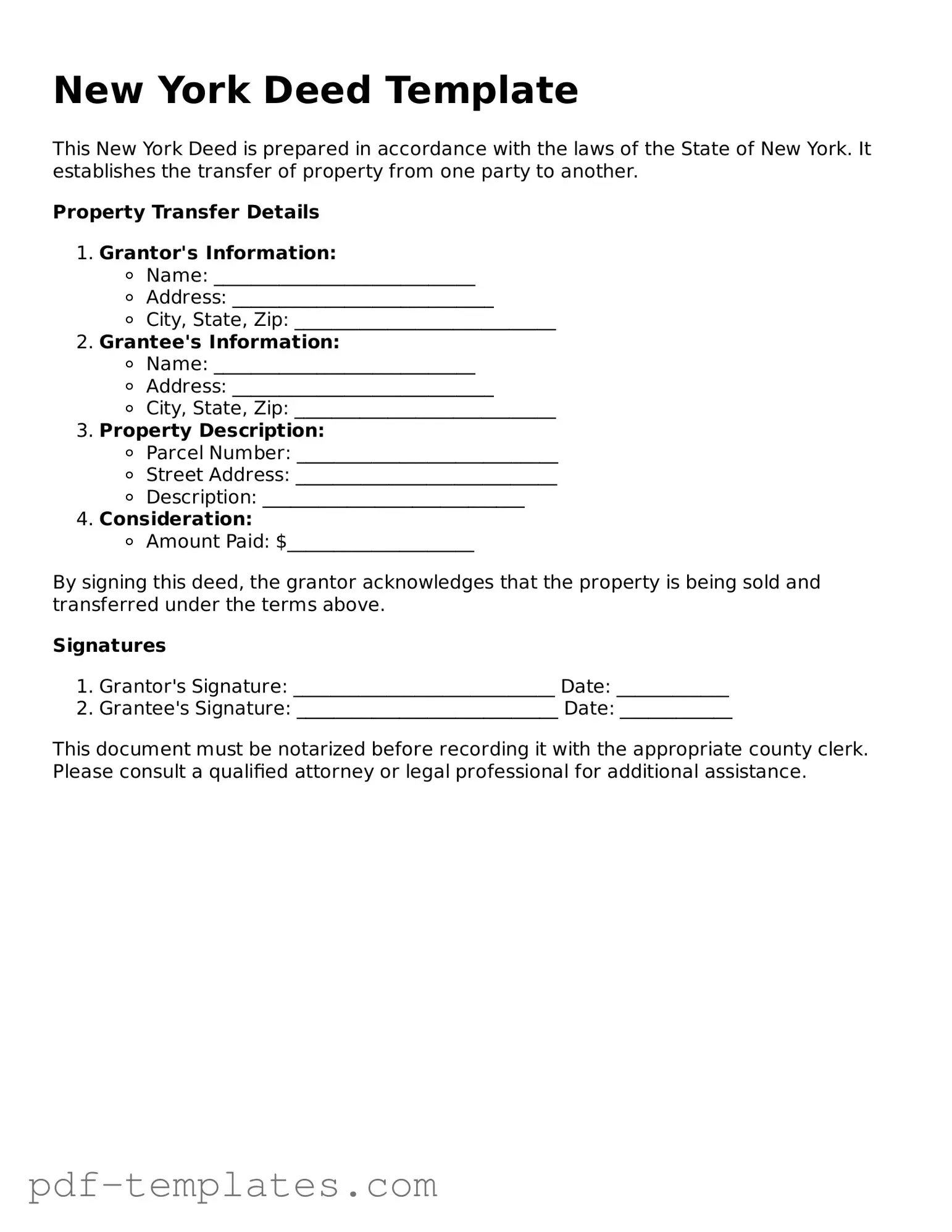The New York Deed form shares similarities with the Warranty Deed, which provides a guarantee from the seller that they hold clear title to the property. Both documents serve to transfer ownership, but the Warranty Deed offers additional protection to the buyer. If any issues arise regarding the title, the seller is responsible for addressing them. This assurance can provide peace of mind for buyers, making it a popular choice in real estate transactions.
Another document akin to the New York Deed is the Quitclaim Deed. This form transfers ownership without any guarantees regarding the title. While it may seem less secure than a Warranty Deed, it is often used in situations like transferring property between family members or in divorce settlements. The Quitclaim Deed allows for a quick and straightforward transfer, but buyers should be aware that they assume the risk regarding the title.
The Bargain and Sale Deed is also similar to the New York Deed. This document conveys property from one party to another but does not guarantee a clear title. It’s often used in foreclosure sales or tax lien sales. While it transfers ownership, it leaves the buyer to investigate any potential title issues. It’s a practical choice for certain transactions where speed is more critical than title assurance.
Next, the Special Warranty Deed offers a middle ground between the Warranty Deed and the Quitclaim Deed. It guarantees that the seller has not caused any title issues during their ownership. However, it does not cover any problems that may have existed before the seller acquired the property. This type of deed is often used in commercial real estate transactions, where the seller may want to limit their liability while still providing some level of protection to the buyer.
The Grant Deed is another document that resembles the New York Deed. It serves to transfer property ownership and provides some assurances about the title. Specifically, it guarantees that the property has not been sold to anyone else and that there are no undisclosed encumbrances. This makes the Grant Deed a reliable option for buyers who want a bit more security than what a Quitclaim Deed offers but do not require the full protection of a Warranty Deed.
The Deed of Trust is also worth mentioning. While it primarily serves as a security instrument in financing transactions, it operates similarly to a deed in that it transfers legal title of the property to a trustee. This is done to secure a loan, and the borrower retains equitable title. This document is common in states that use deeds of trust instead of mortgages, providing a clear structure for both lenders and borrowers.
The Affidavit of Title is another document that complements the New York Deed. While it does not transfer ownership, it serves as a sworn statement by the seller regarding the status of the title. This document can be used alongside a deed to reassure the buyer that there are no hidden claims or liens against the property. It adds an extra layer of confidence for buyers, who want to ensure they are making a sound investment.
In the realm of property transactions, understanding various deed types is crucial, and just as the New York Deed has its comparisons in the form of Quitclaim, General Warranty, Bargain and Sale, and Special Purpose Deeds, individuals managing their financial affairs in California may benefit from legal documentation like the All California Forms that empowers them to assign decision-making authority to an agent when necessary.
Lastly, the Leasehold Deed is similar in that it involves a transfer of rights, but it focuses on leasing rather than outright ownership. This document grants a tenant the right to use and occupy property for a specified period. While it doesn’t convey ownership, it establishes a legal relationship between the landlord and tenant, similar to how a deed establishes ownership between the seller and buyer. Understanding these nuances can help individuals navigate their real estate transactions more effectively.
